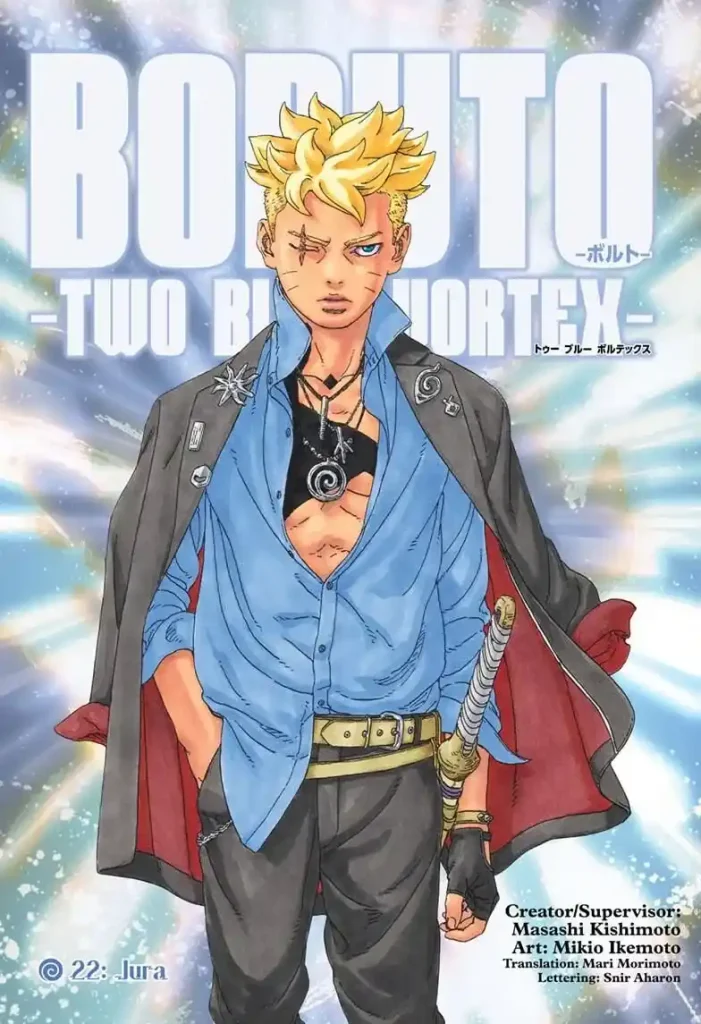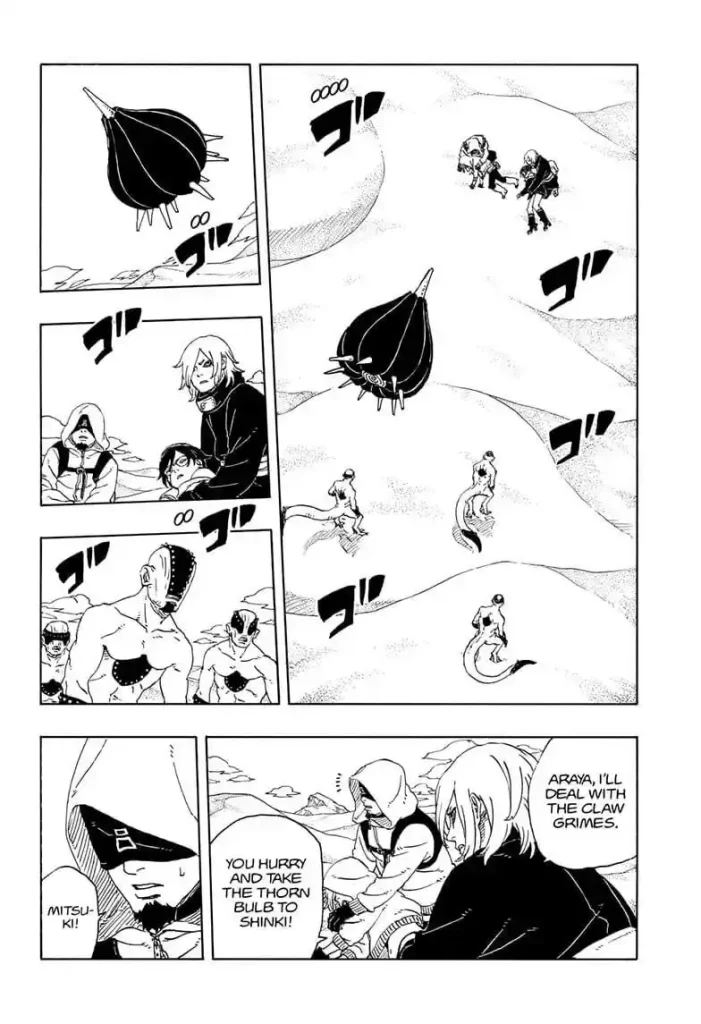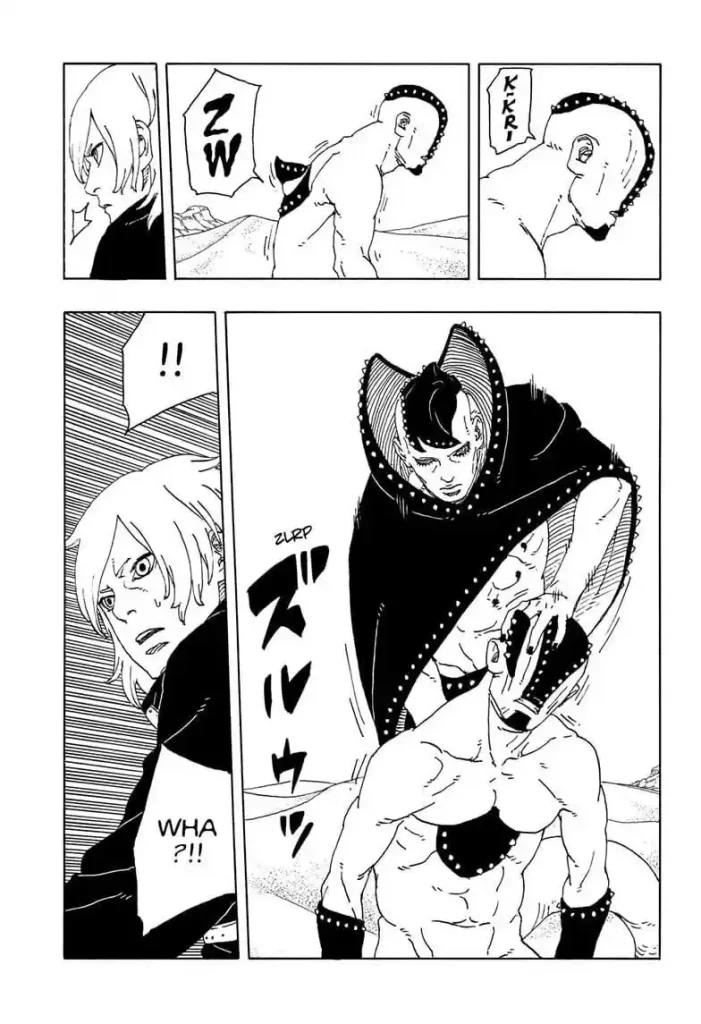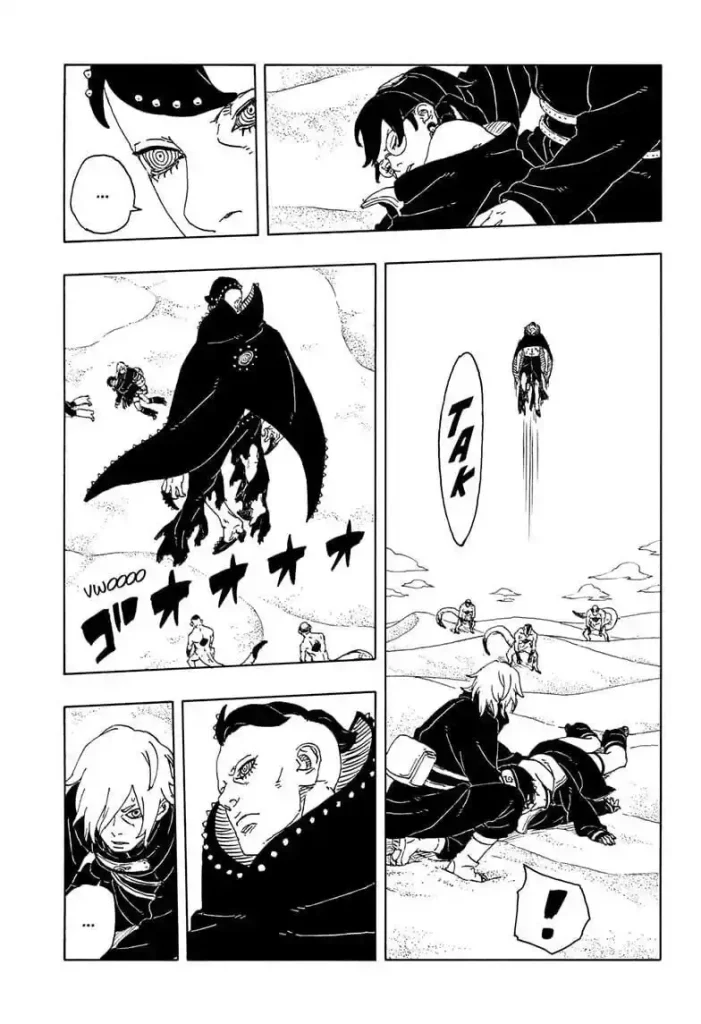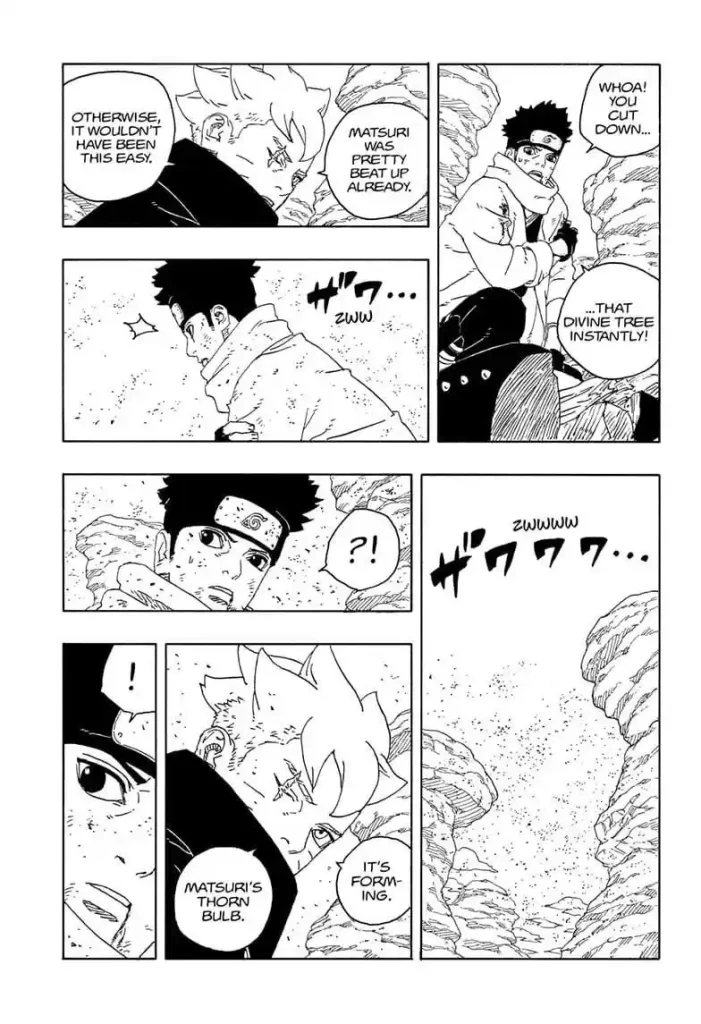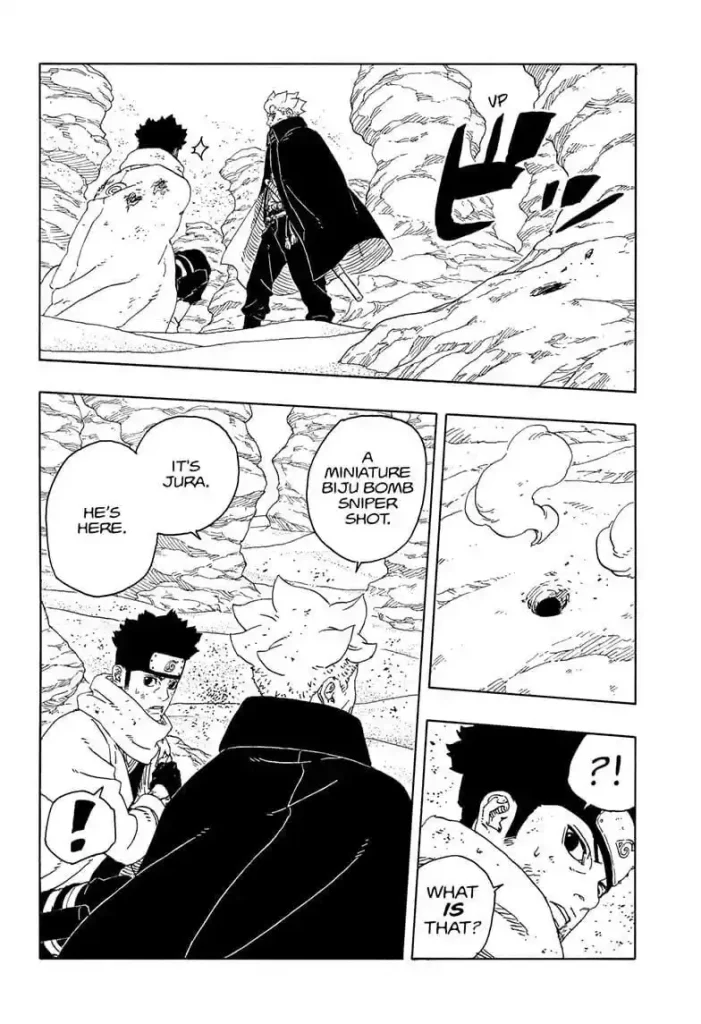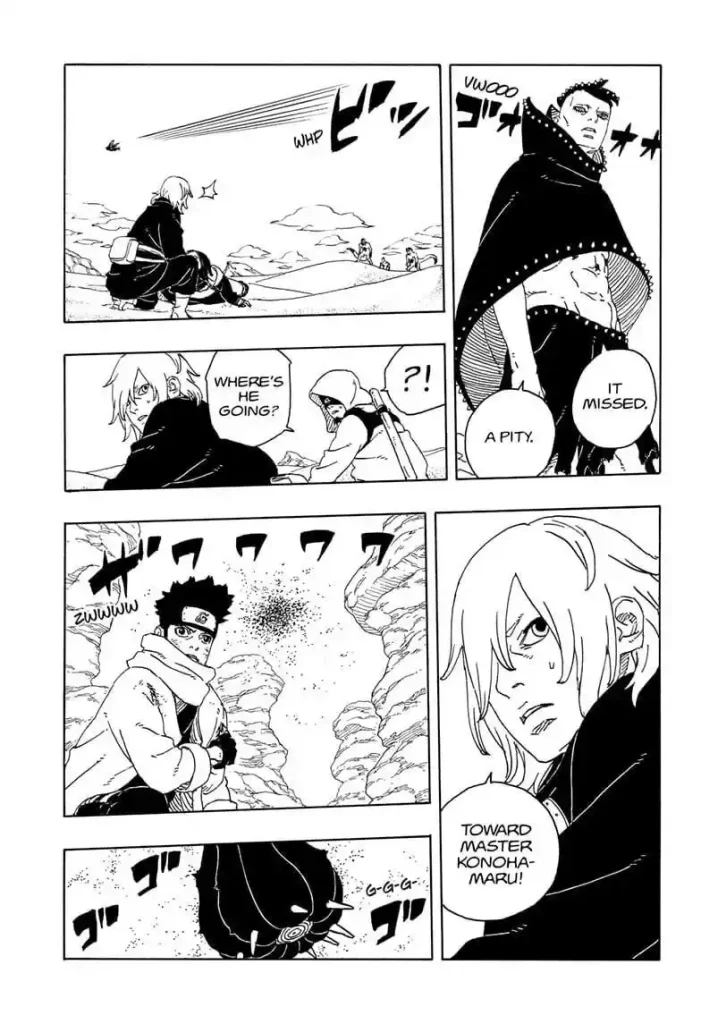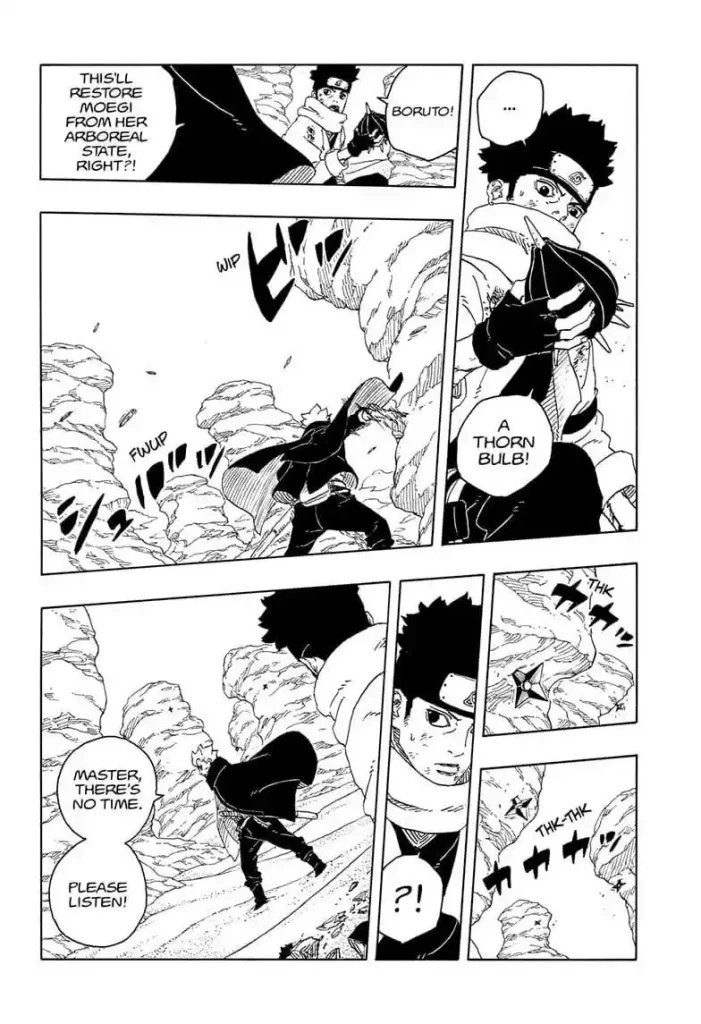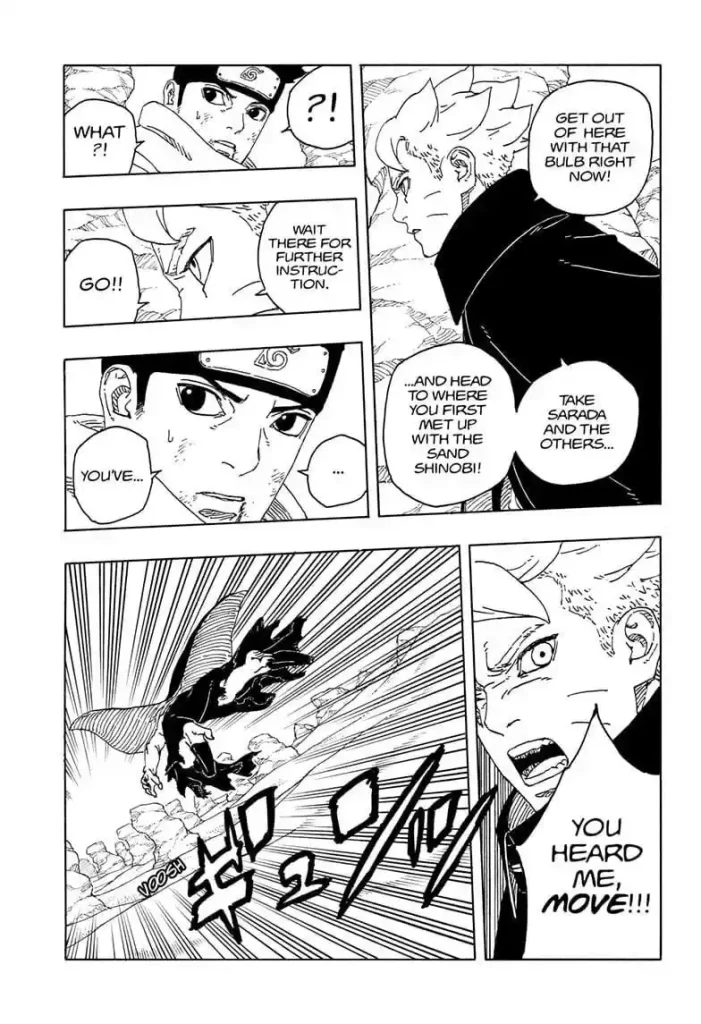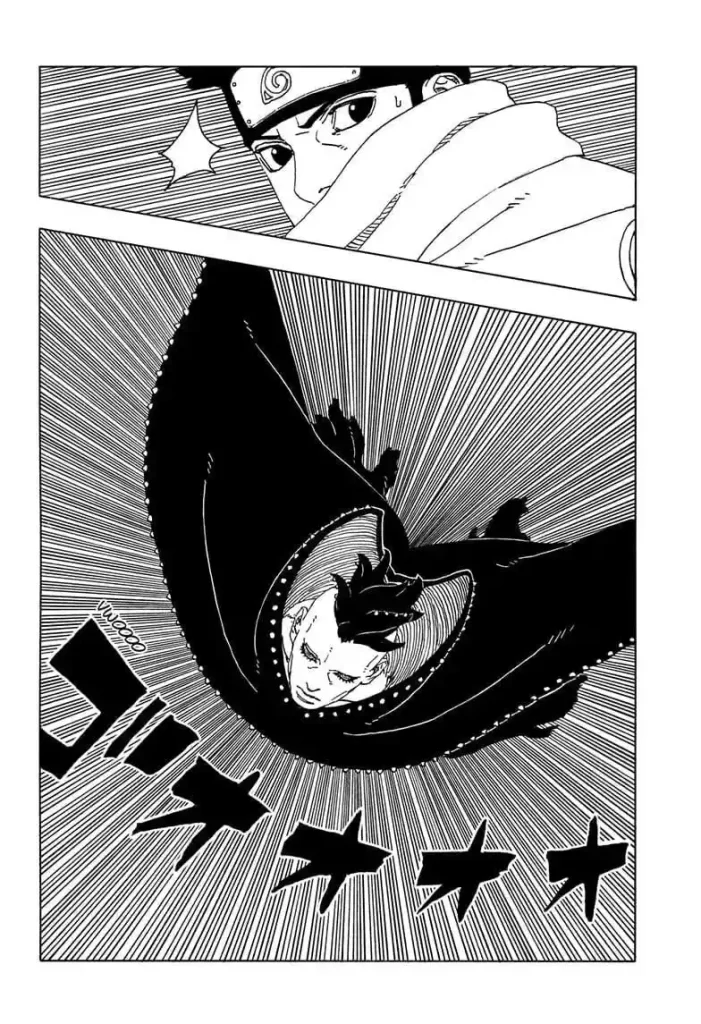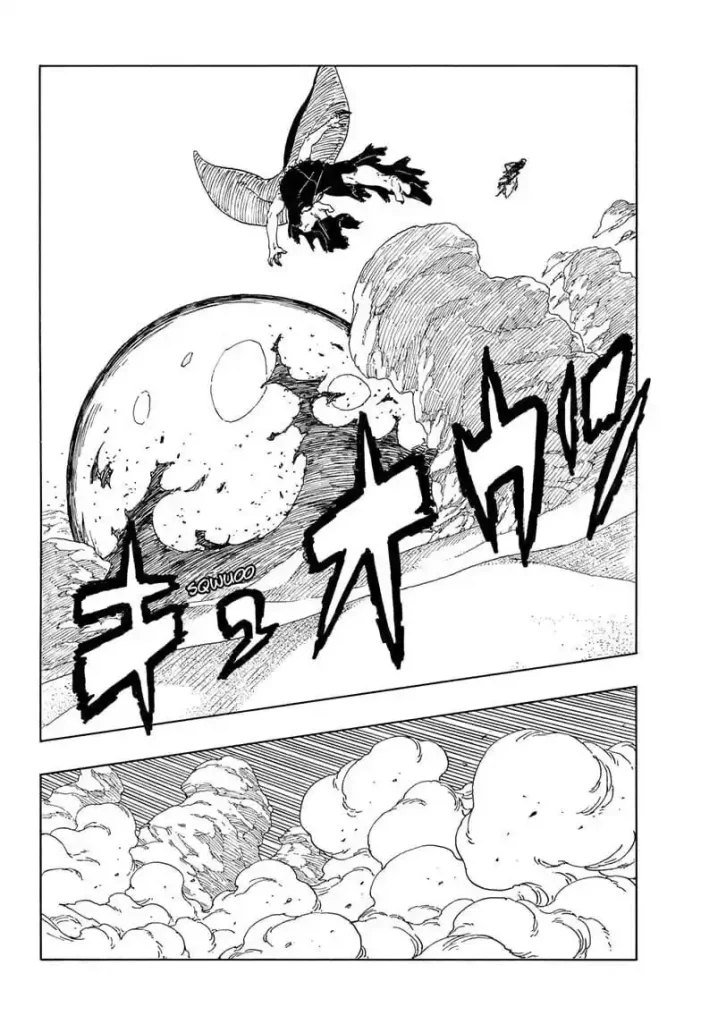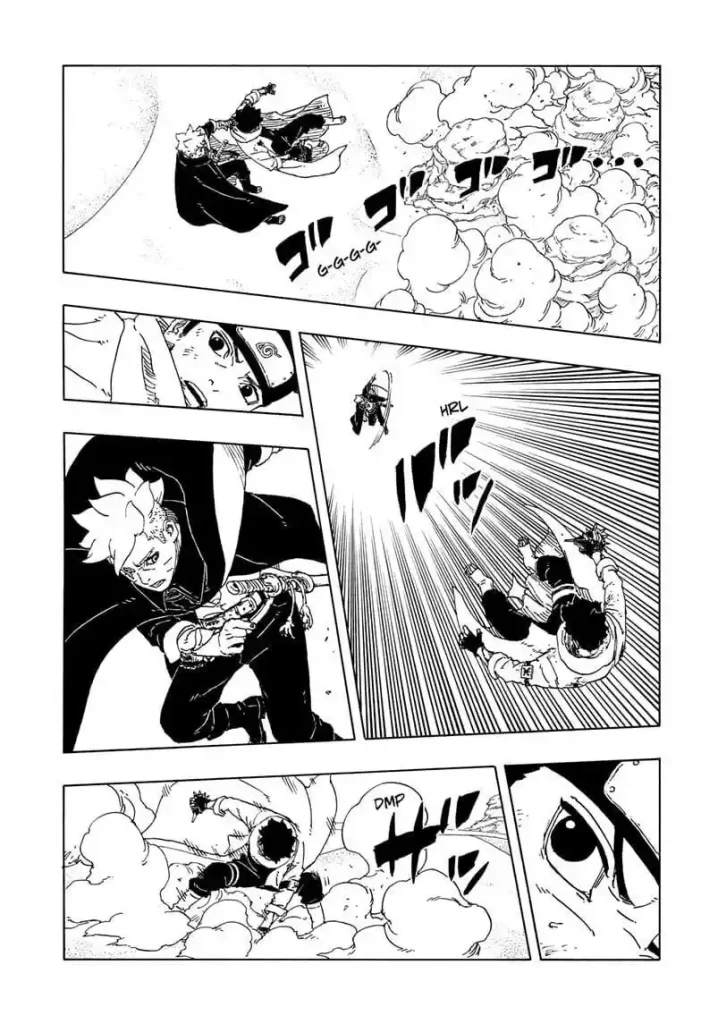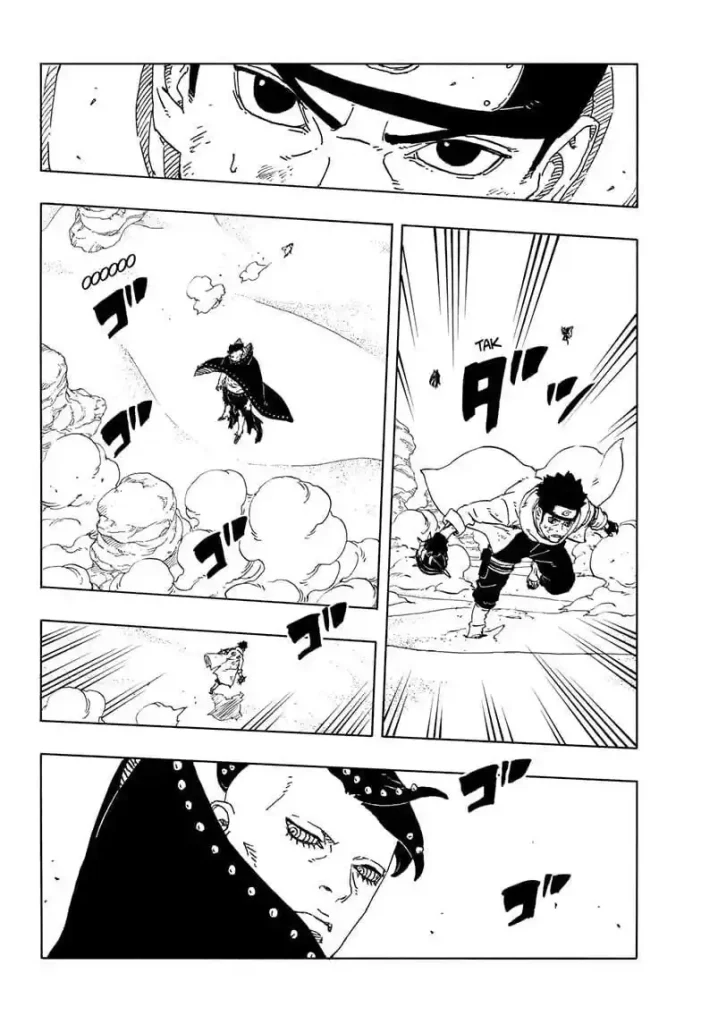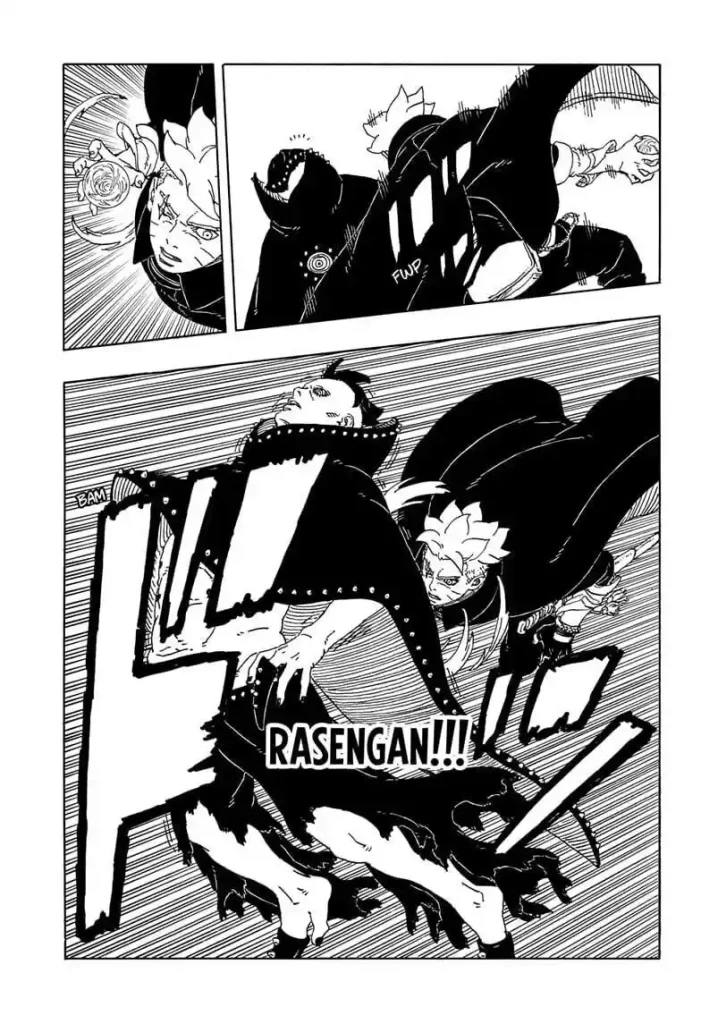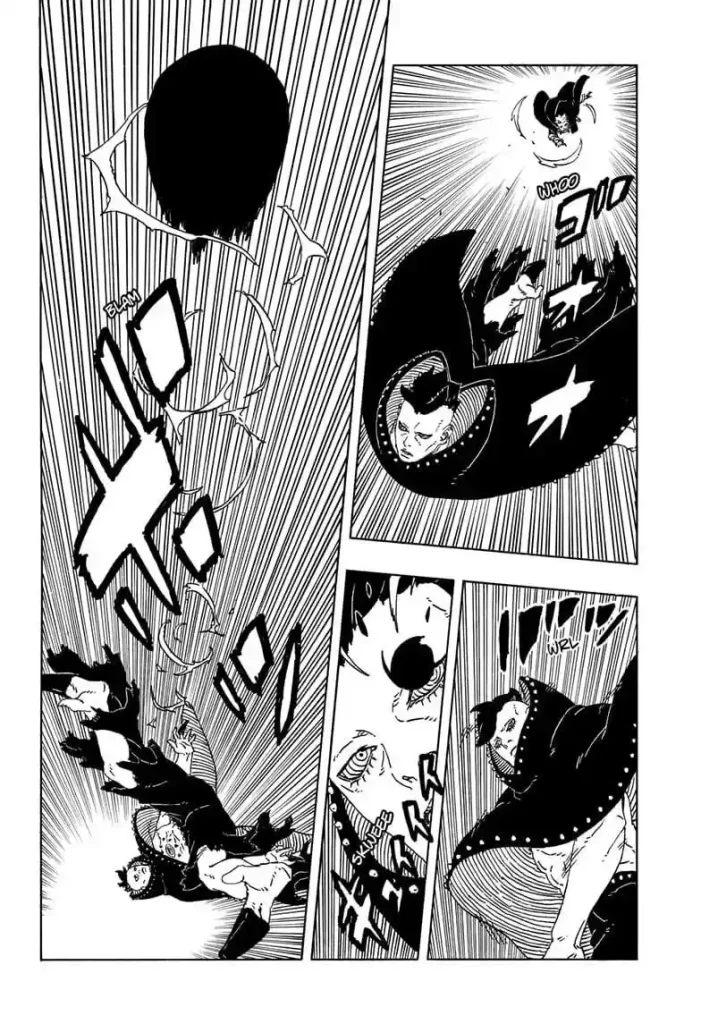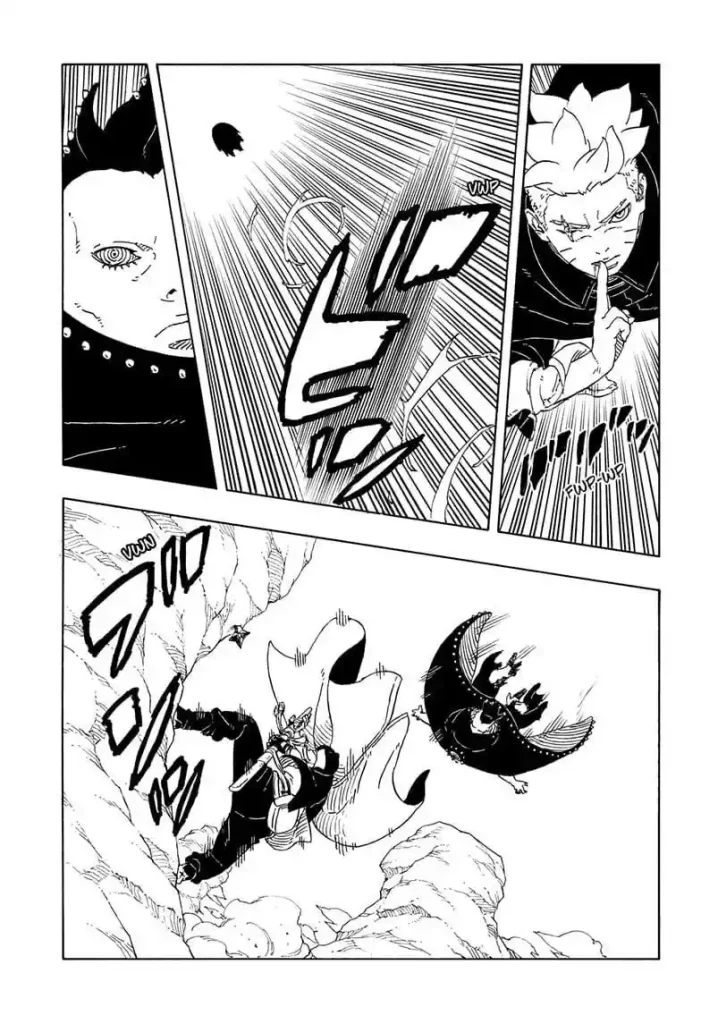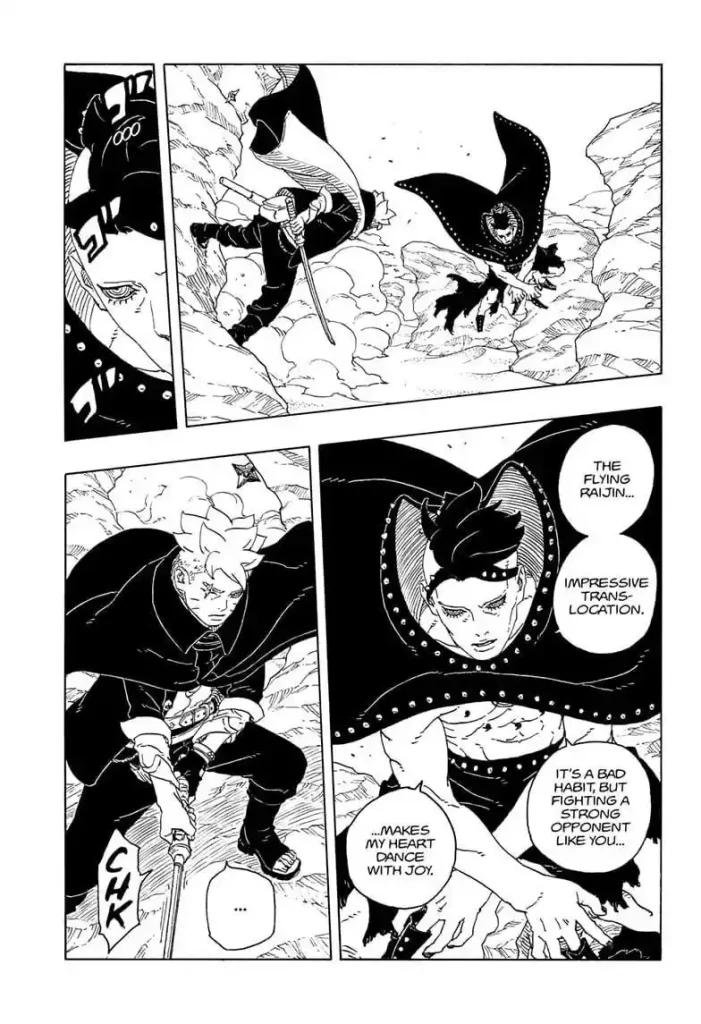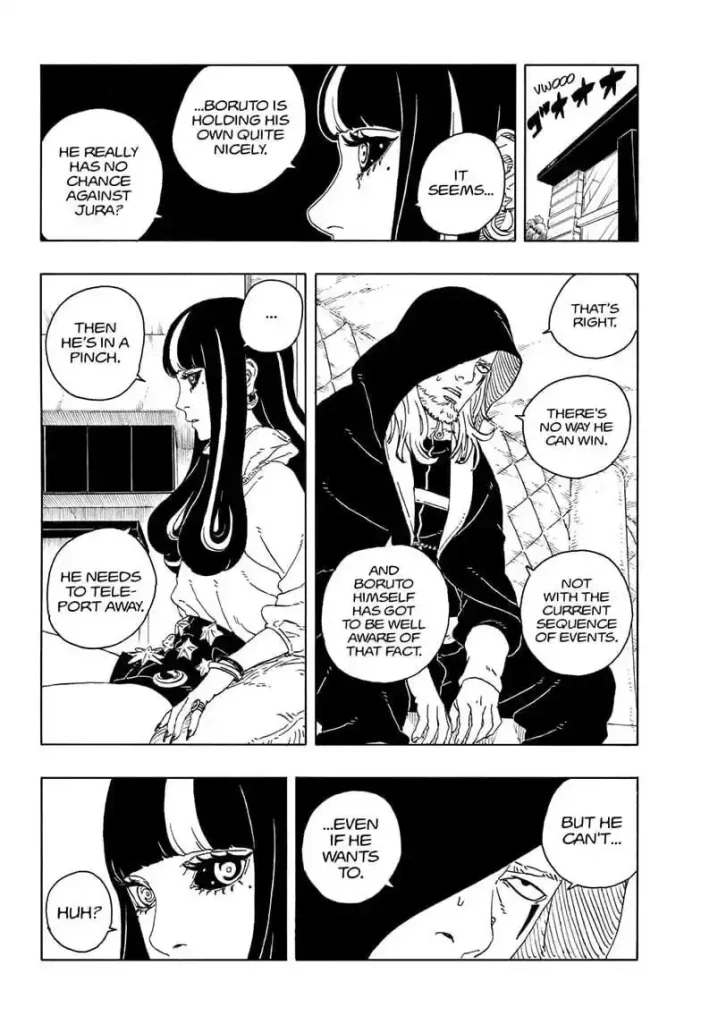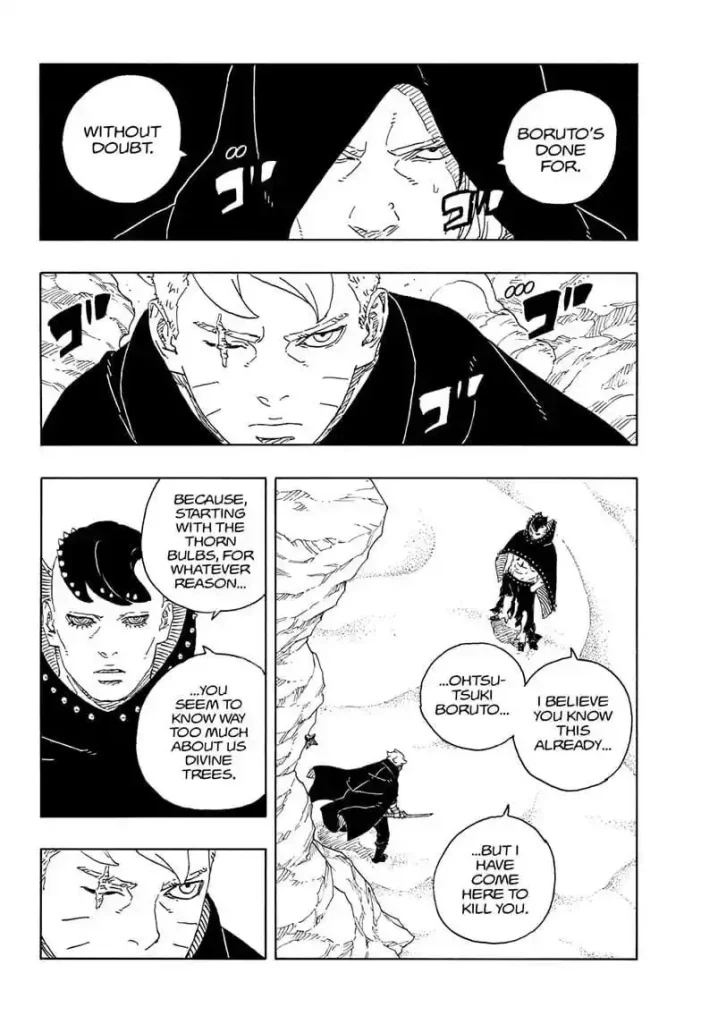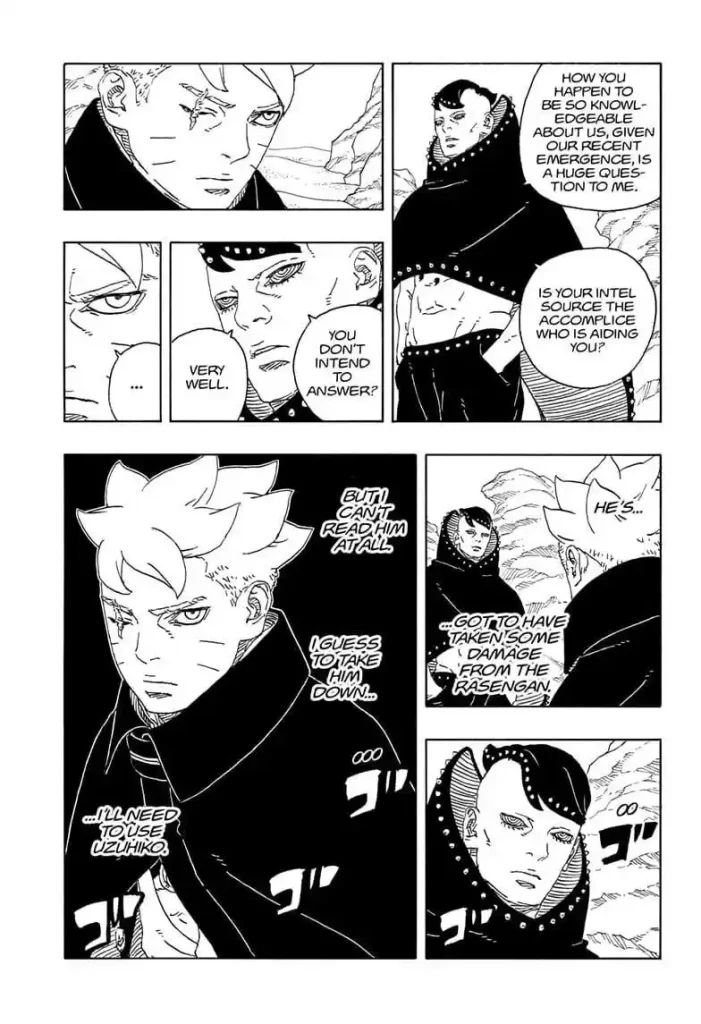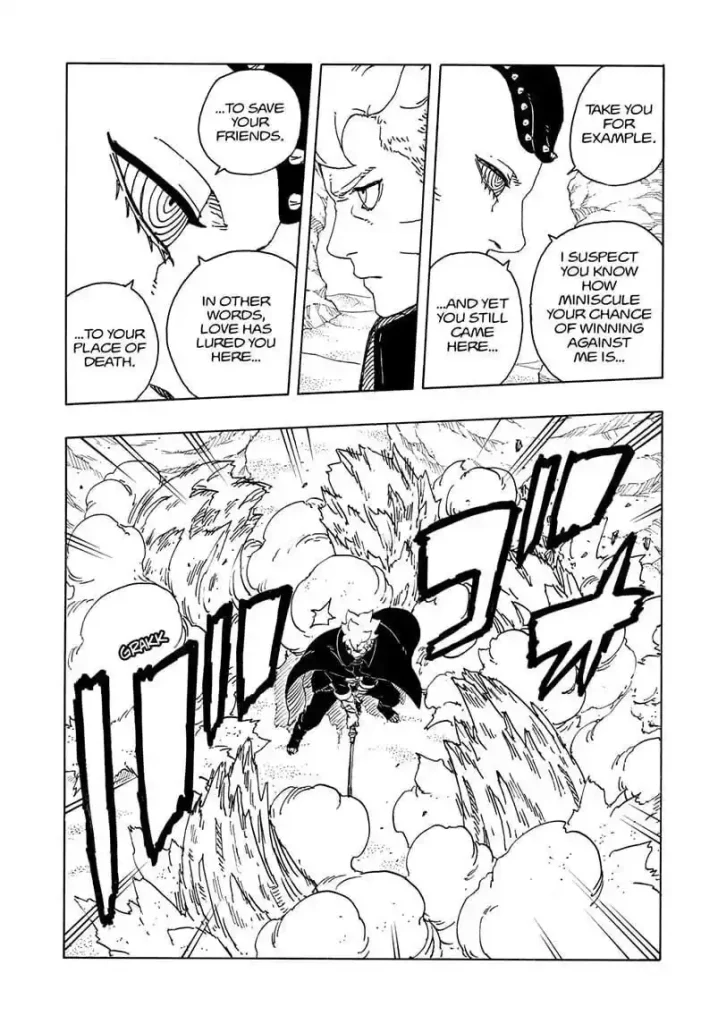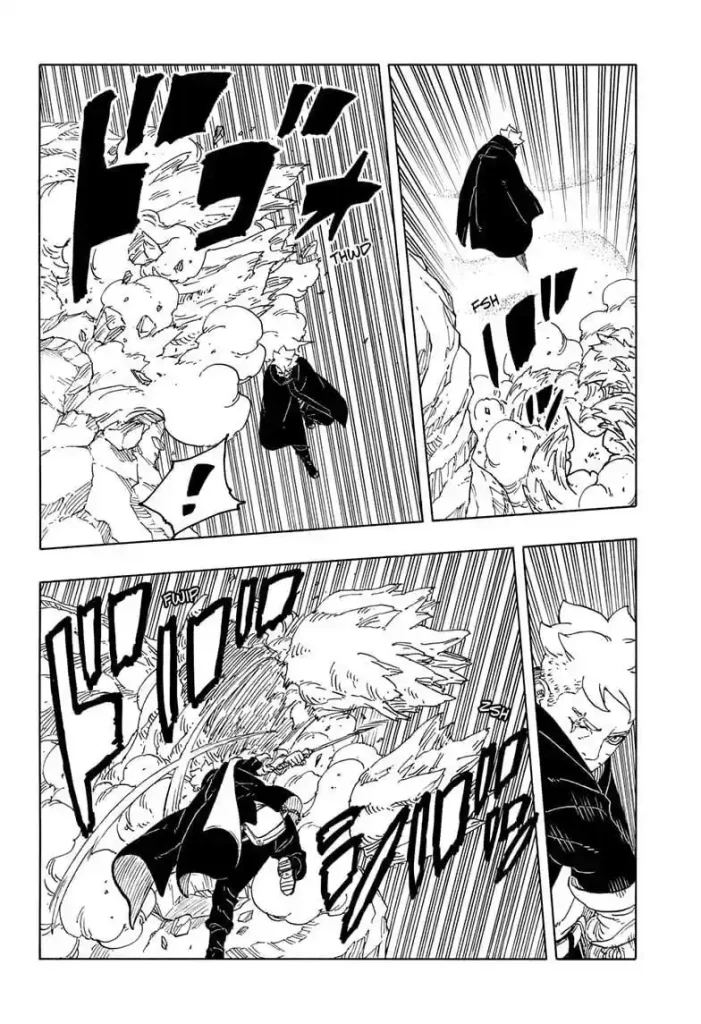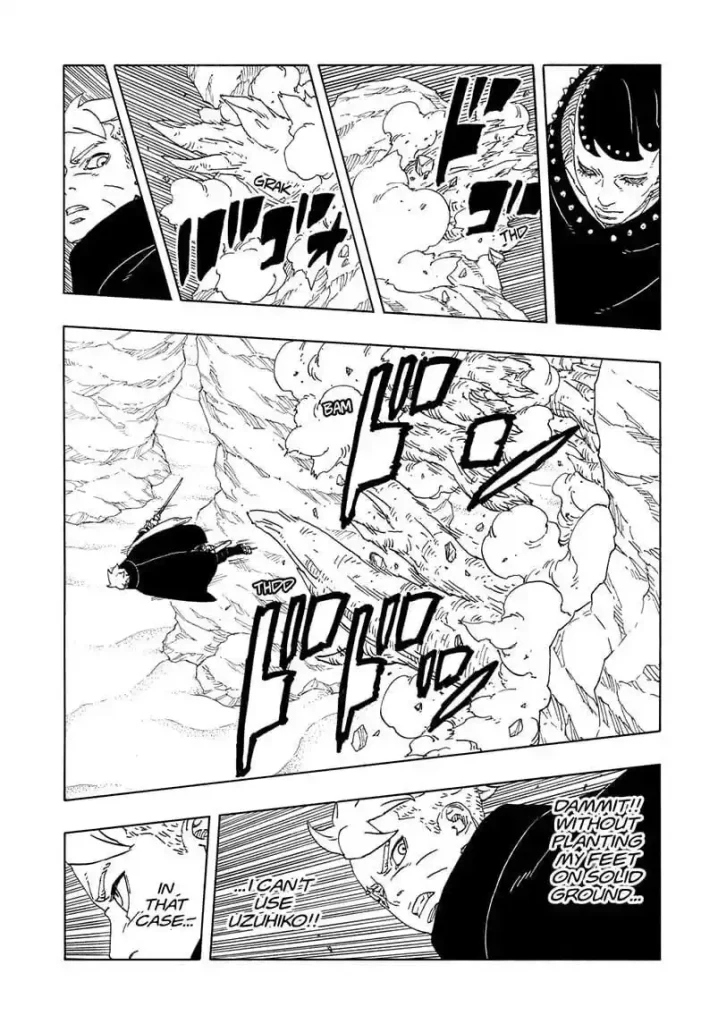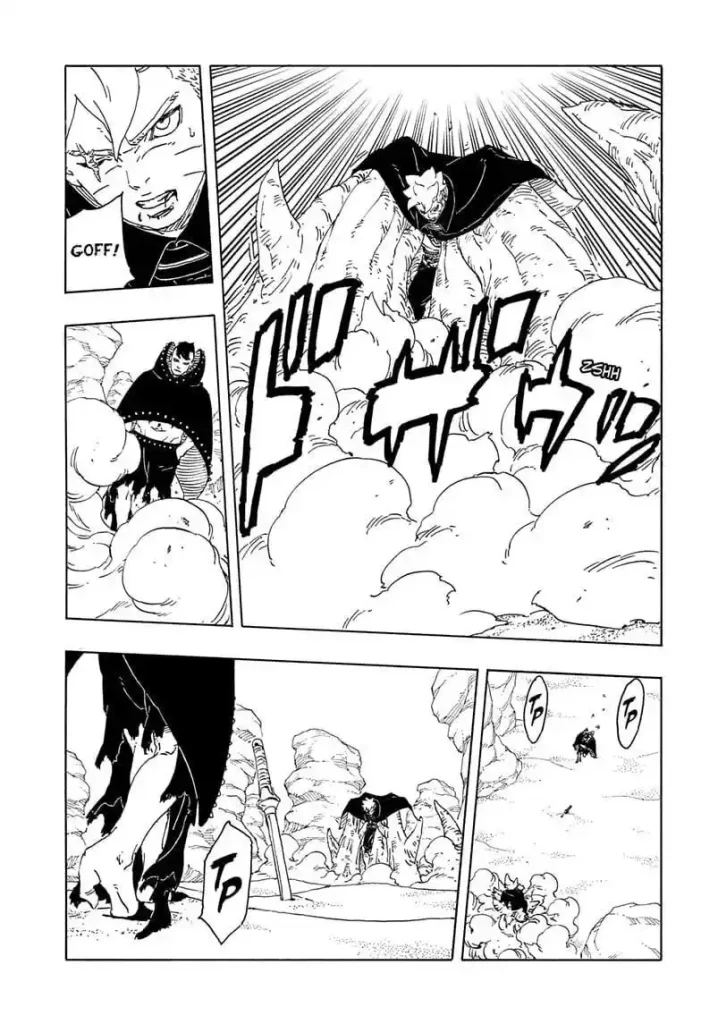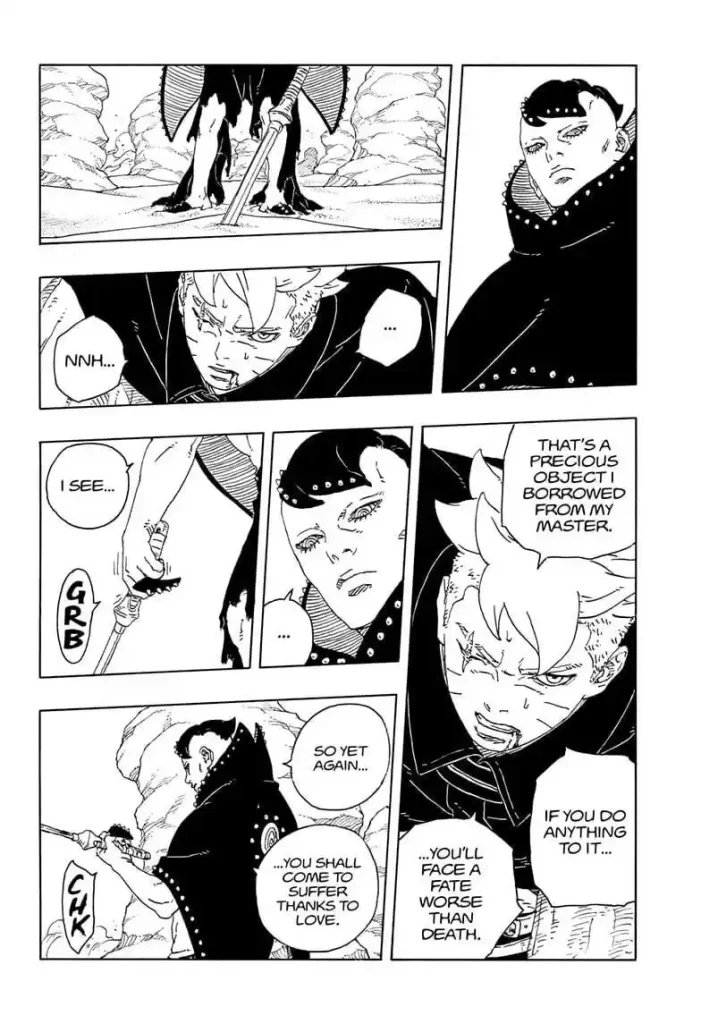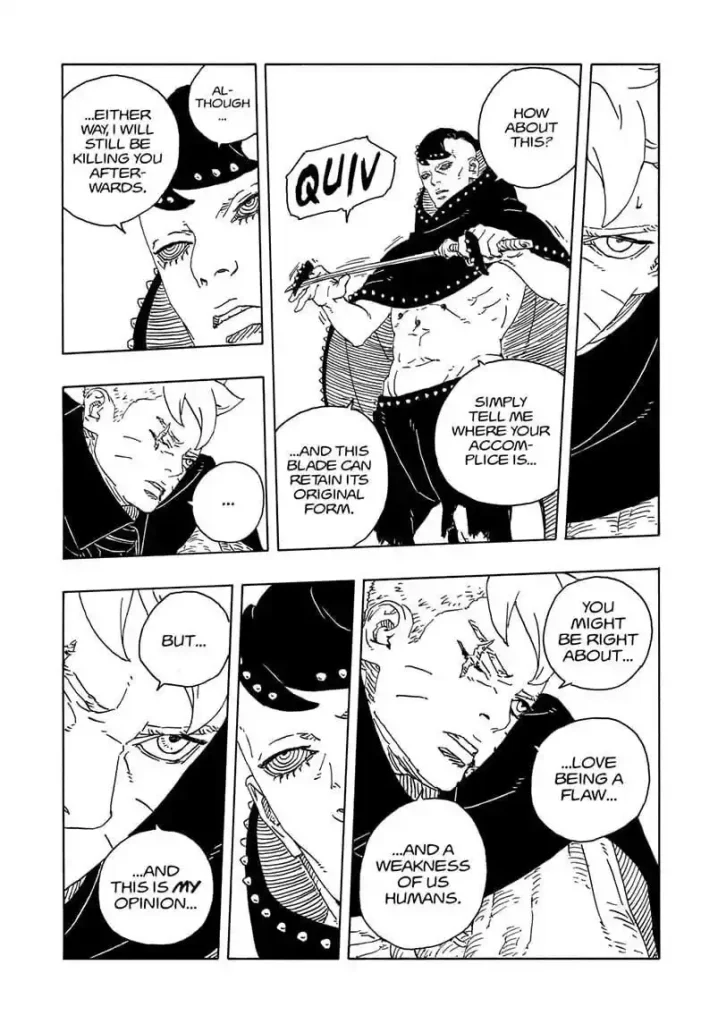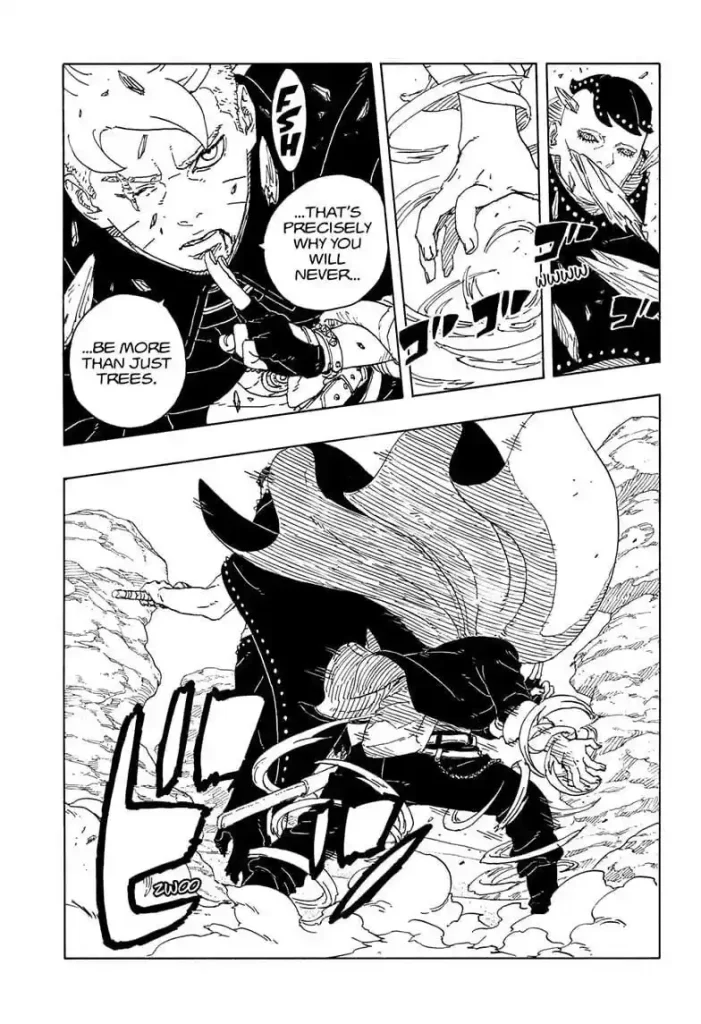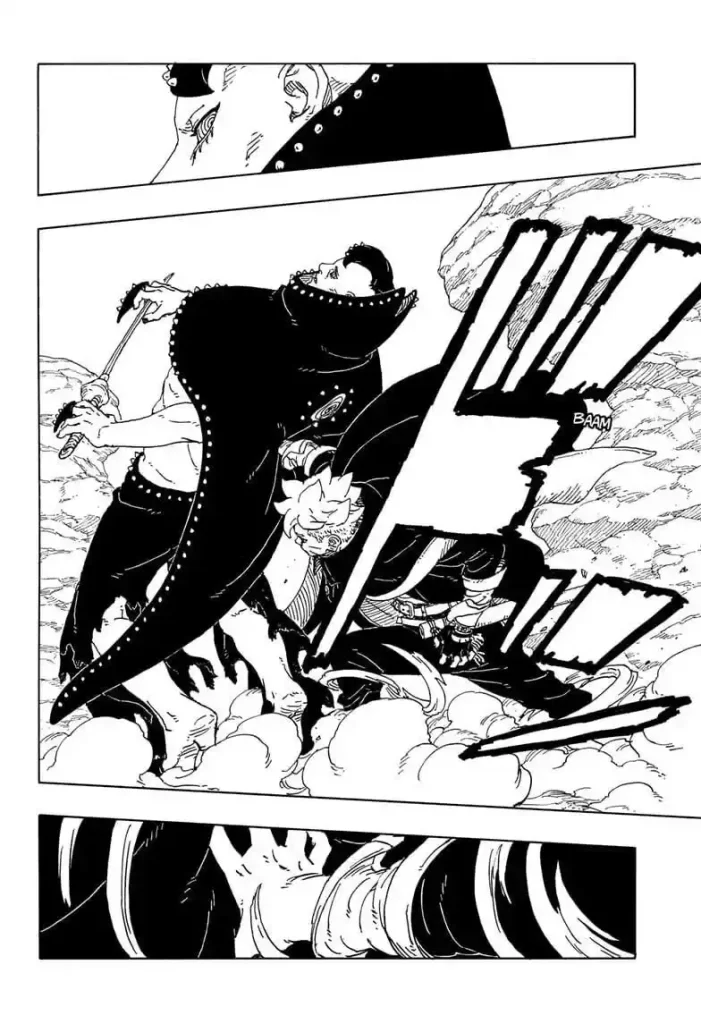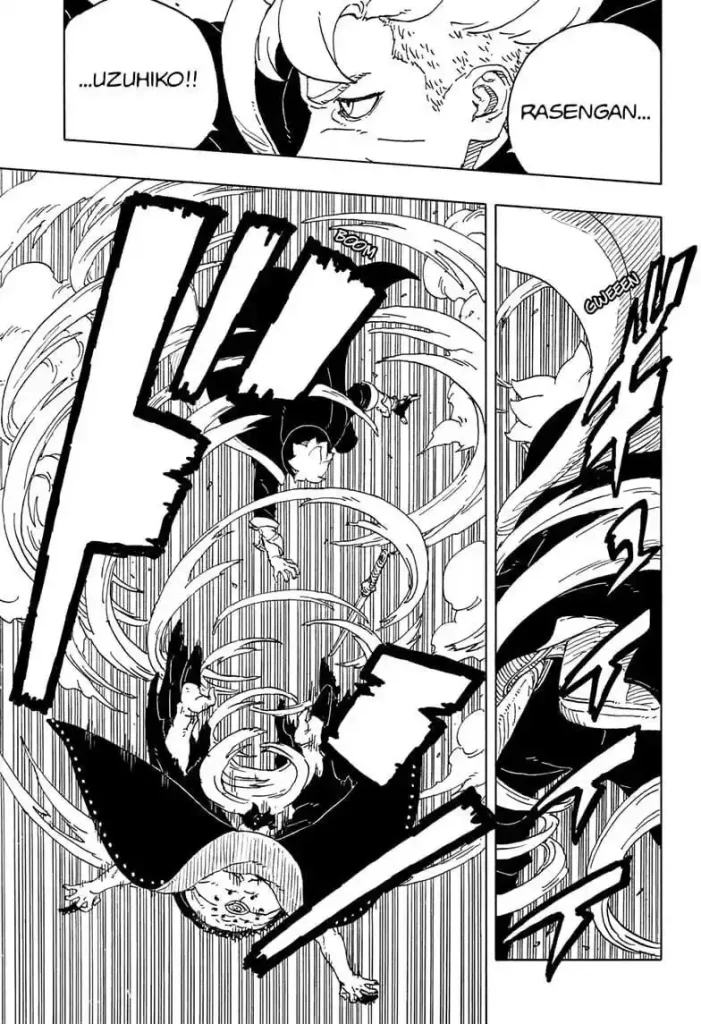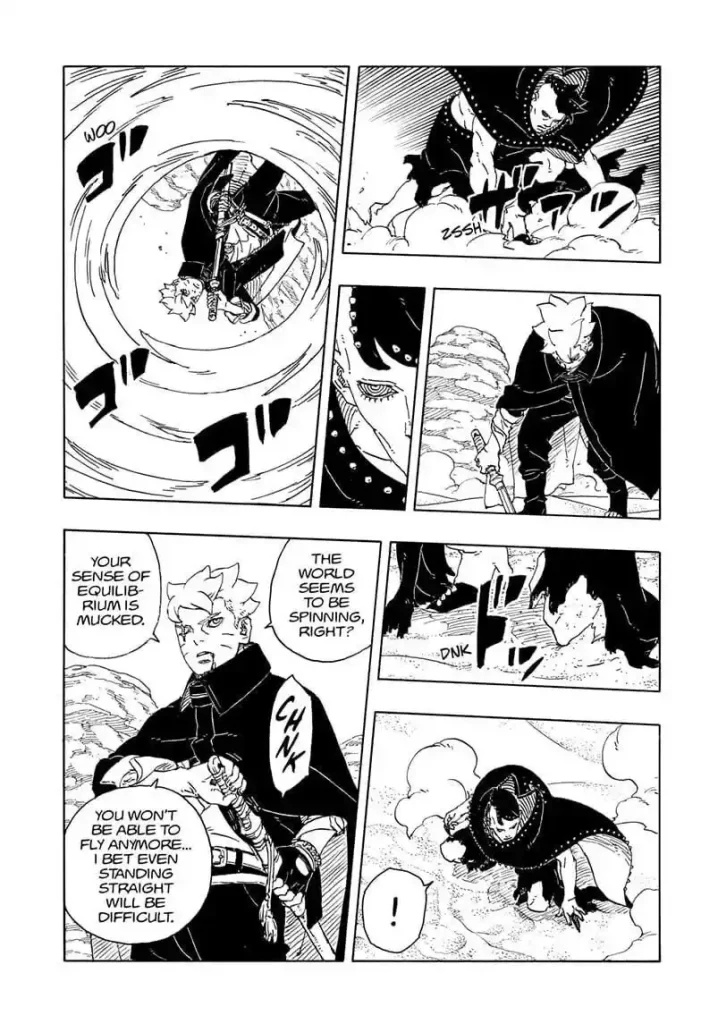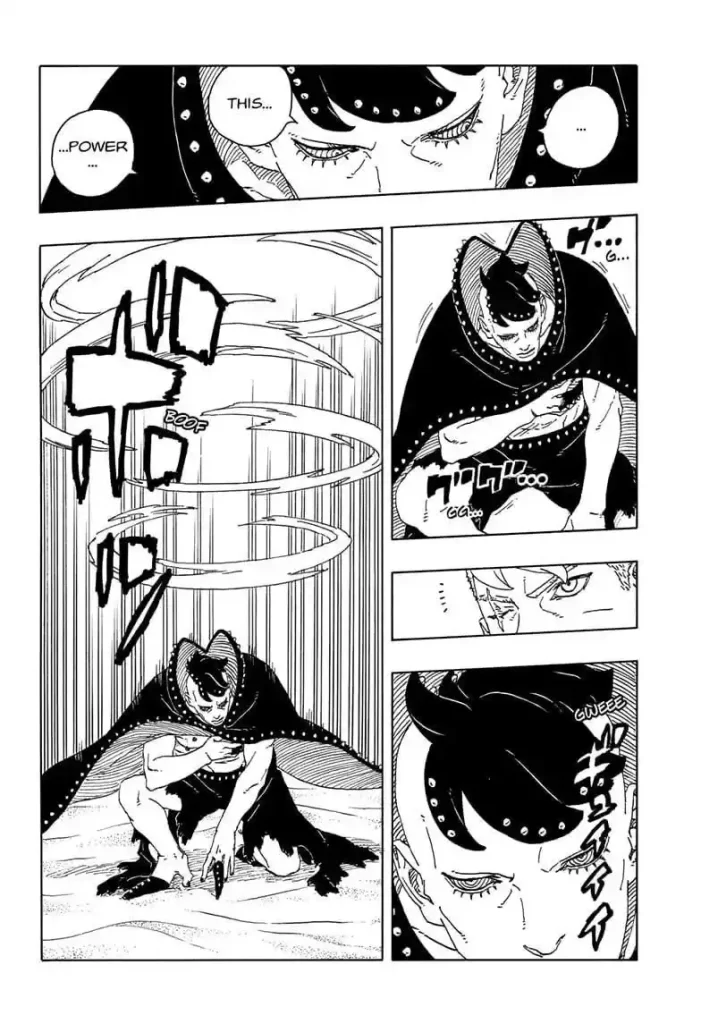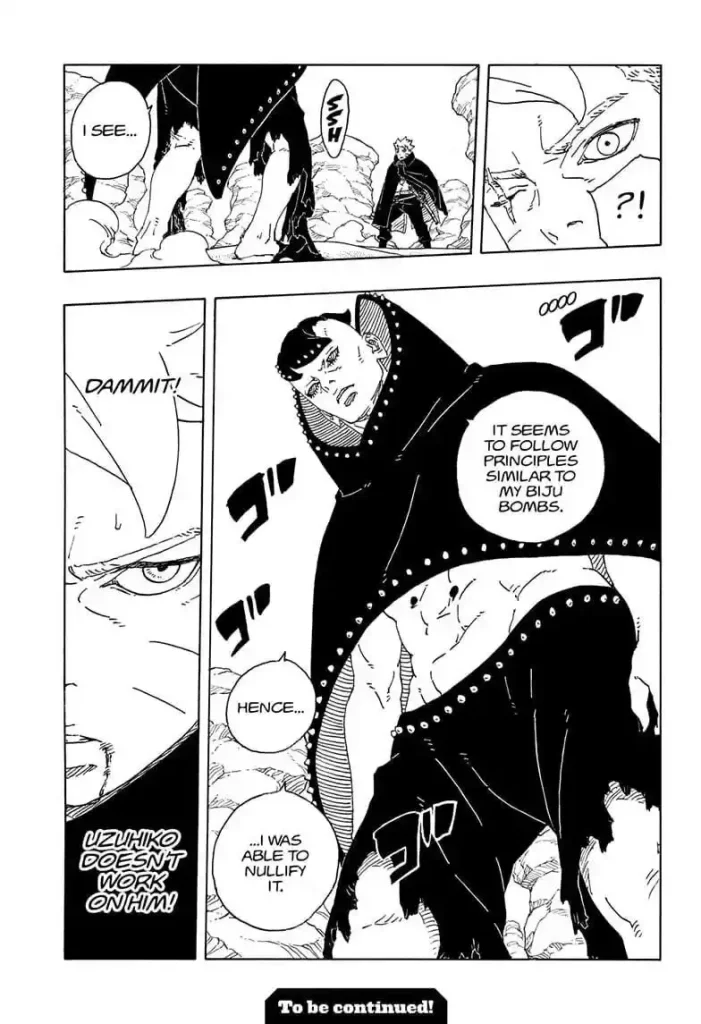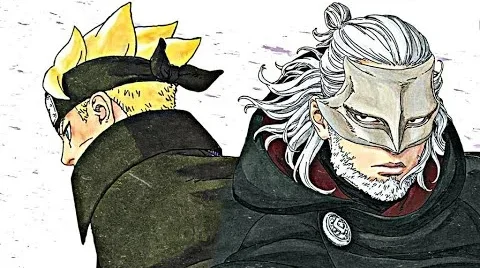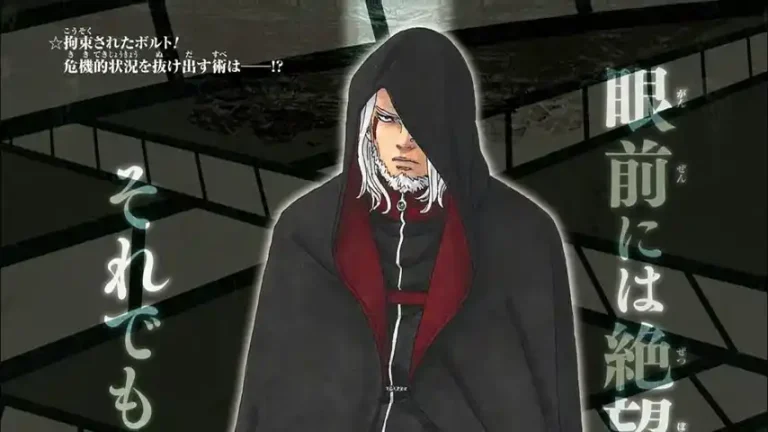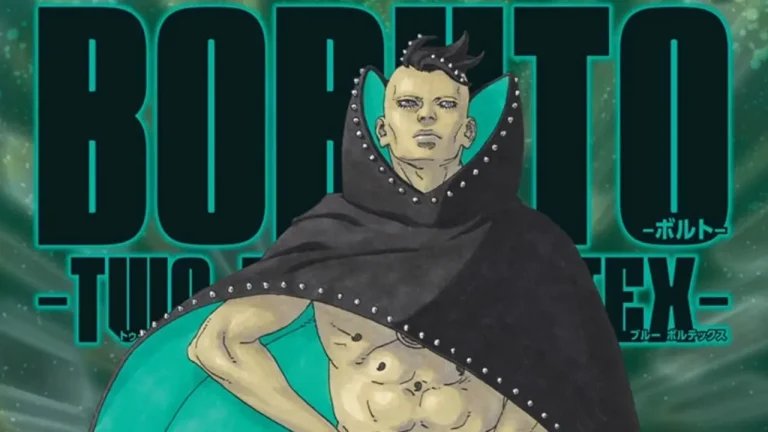Read Boruto Two Blue Vortex Chapter 22 (Jura) Manga Online In High Quality For Free
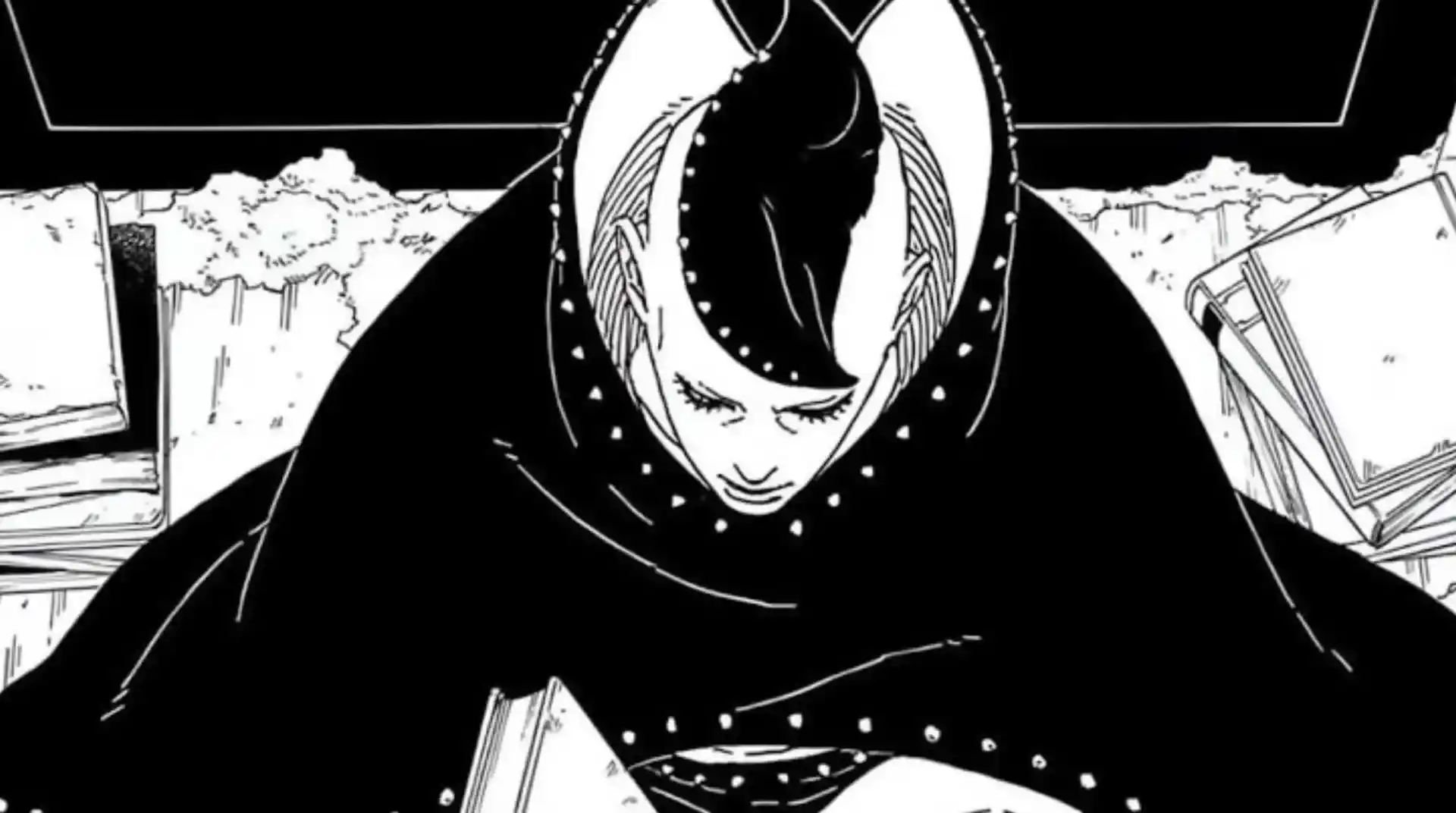
Boruto Naruto Next Generations Manga 102

Boruto Manga – Chapter 22 Review Online
Kishimoto seems to have teased both the Jōgan awakening as well as Kawaki’s emergence with the latest installment of Boruto Two Blue Vortex. The cover art shows Boruto with a background that gives some afterlife sort of vibes. But on closer inspection, this background looks exactly like the Jōgan’s pupil from the anime.
And if you have read my prediction blog on this awakening, you must know that this design choice is not a coincidence at all. Not just that—Kawaki is also almost confirmed to make an appearance in the next chapter because, back in Part One Boruto Naruto Next Generations, he made his debut in Chapter 23. And looking at how everything has been set up, it seems like the sequel is following the same pattern, with Kawaki about to make an appearance in his attack form next month.
Well, this chapter reveals some concepts which require you to recap the Minato one-shot manga. But you don’t need to do that, since you’ve chosen to read this chapter review. So, let’s dissect everything that Boruto Two Blue Vortex Chapter 22 had to offer.
Starting with the chapter cover—which is a prophetic illustration of what’s to come. The chapter is called “Jura” and has Boruto on the cover. But if you look behind, you’ll notice this light looks like the way to heaven—something that people would see after they die. So, judging by the title and the events of this chapter, it seems like a clever setup for making Jura the one who would make Boruto witness “heaven.” In other words, he’s about to kill him—just as predicted by Kashin Koji.
But don’t you think him dying doesn’t even make sense, since Kawaki is about to appear in the next chapter? It’s the same chapter number where he made his debut in Part One. So, his appearing on the battlefield likely means that Boruto will survive. Well, that may be half correct—but who said Kawaki is coming to save him?
Even if he has the attack mode and all the new power-ups unlocked from Amado, it’s very likely that he would first let Jura finish Boruto, and after that, he would appear to fight the big bad himself. This would be the most convenient approach based on what Kawaki wants. Boruto would be dead at the hands of their common enemy, and after his death, Kawaki could appear to take down the enemy himself.
Well, that’s a theory that deserves a full blog article.
It starts off from where we left last time. The first panel shows us Ryu’s soul thorn flying in the air and Mitsuki asking Araya to take it to Shinki’s tree—obviously to revive him. Until then, he would deal with the Grimes. To no one’s surprise, Jura appears the next moment. But instead of going after the shinobi, he quickly starts to search for Boruto Uzumaki.
But I would like to discuss something about the most ignored panel of this chapter. Mitsuki asking Araya to revive Shinki with the soul thorn bulb could have a deeper meaning than what’s being portrayed right now. Boruto and Jura are in a full-fledged fight, which means it’s the perfect time for Araya to transfer the soul thorn bulb to Shinki’s tree and get him back. And after he does that, it’s very likely that Shinki, along with Mitsuki and Araya, would join the battlefield—similar to the One-Tails escort arc of the anime, where Boruto and Shinki can be seen fighting Urashiki in the exact same place.
What’s interesting about this anime-exclusive fight is that Boruto gets his Jōgan activated against Urashiki, who calls it a “troublesome eye.” So what if all of that was a foreshadowing for the manga’s events? The anime has done this several times—sometimes with the opening and ending themes, and sometimes with the original arcs. So, Shinki joining the battlefield just to see Boruto awaken the Jōgan against Jura is a highly likely possibility, which may be why the first panel holds much more significance than you might believe.
Shortly after this, Jura emerges from the back of a Claw Grime and instantly starts looking for Boruto. Mitsuki recognizes him in an instant, but still keeps his head up to look for the main target.
Well, in one of the prediction blogs, I talked about the possibility of Jura keeping the shinobi hostage to lure Boruto out, but it seems like that’s not how he wants to operate—and it kind of makes sense. Jura is a manifestation of nature energy, which has somehow gained consciousness. That makes him one of the strongest beings to ever step on the planet. So, there was no requirement for him to play emotional games to drag out his target. He’s a metaphor for destruction—and that’s what he believes in.
Even though his ever-growing, curious brain makes him think of human concepts such as love, when it comes to somebody who knows too much about him, there is no fun in keeping such a liability around for long.
Before changing his location, he does look at Sarada, who’s unconscious at the moment. I believe he must have heard the entire love lore that she explained to Ryu, since he’s connected with all the Shinju. But even after that, the thought of using her as a key to pull Boruto out didn’t strike Jura—which again shows his determination to complete his mission without any shortcuts.
What’s more interesting is that he didn’t even look at the soul thorn of Ryu, which means he no longer needs comrades who failed to fulfill their mission and couldn’t even survive. Then the scene switches to Konohamaru and Boruto, who can be seen with the deteriorated corpse of Matsuri. It then gets confirmed that Konohamaru’s remarkable betrayal move on Matsuri was not a waste, as Boruto says that she was already pretty beat up. That’s why killing her was not that hard.
Shortly after, the soul thorn of Matsuri starts to form itself. A miniature Bijuu bomb sniper shot lands around them, which fails to hit Boruto, and that’s when he realizes that Jura has appeared. Konohamaru asks Boruto if this thorn soul bulb can be used to revive Moegi, to which he receives an alerting response, as Boruto wants him to run away as fast as he could. He is instructed to take Sarada and the others to the point where they first met the Sand Shinobi.
But looking at how fast everything was happening, Konohamaru goes silent for a moment and tries to gain some more clarity from Boruto. But that’s when he again gets reminded that they don’t have much time. And just at this moment, Jura throws an even bigger Bijuu bomb at them, which leads to Boruto saving Konohamaru yet again. After realizing the seriousness of the situation, Konohamaru decides to run away in the direction of the Shinobi, taking the thorn soul of Moegi with him too.
After this, we get some quick scenes of Boruto battling Jura by making moves like appearing behind his back to land a hit, as well as using the Flying Thunder God to dodge some energy blasts from the Shinju. Jura then gets impressed by Boruto’s way of juggling between techniques, and that’s when he says something odd. The Shinju says, “It’s a bad habit of me. But fighting a strong opponent like you makes my heart dance with joy.”
This means he has fought strong opponents in the past. But that wouldn’t make sense, because he’s just a Ten Tails who has recently unlocked intelligence and consciousness. Would it technically make sense for him to have past opponents? Well, what I think most of you must be unaware of is that this isn’t the first time a character used a statement like this to hint at a past event.
After returning to Amado for recovery following the Naruto-Sasuke fight, Jigen—or let’s say Isshiki—said that it’s a bad habit of his to get too happy and just get carried away. This means something happened in the past where he let his guard down, likely after discovering the perfect planet to harvest the chakra fruit. That must have been the moment when Kaguya turned on him, making him dwell inside the psyche of a monk for thousands of years.
In Jura’s case, the fact that it’s not possible for him to fight with other beings in the Ten Tails form could also mean that at some point in life, the Ten Tails was actually an intelligent species like the Otsutsuki. Another interpretation of the statement could be that he’s referring to the Himawari battle, who also was a strong opponent and got him thrilled—but not as much as Boruto.
Let me know what you think of it in the comments.
We then get insights from Kashin Koji and Eida on the current battle. Eida finds Boruto’s speed impressive, so she questions Koji if he actually doesn’t hold any chance against Jura. Koji responds by saying that’s true—he definitely has no chance to win this fight, and he himself must be well aware of it.
Then Eida says something that all of us have been wondering too: why can’t he just teleport back to the hideout or somewhere safe? Well, Koji explains it’s not that simple, since the objects used for teleportation are placed far away from him, and it’s not easy to detect them after the distance increases. On top of that, he’s being targeted by Jura, which makes all of it a lot more difficult. And even if he’s able to somehow teleport to a safer place, it would only put the others in trouble, as Jura would decide to retrieve the soul thorns of the fallen Shinju—which could even get the Shinobi killed as well.
In a nutshell, he’s trying to keep Jura engaged for as long as possible, just so Konohamaru and the others would reach a safe place. But what he doesn’t account for is the fact that Jura won’t waste much time to get him killed, because that’s his primary goal. So him distracting the Shinju is only going to get him killed—with no exceptions.
We then get to see a “talk-no-jutsu” moment between Jura and Boruto, as the Divine Tree clarifies his reasons to kill him. What I noticed here is that under normal circumstances, Boruto shouldn’t have any knowledge of Jura coming after him, which might have finished the story at a very early stage. However, the involvement of Kashin Koji has led to a brand new timeline where conversations like these are taking place. They did not happen in any other version of the future, which only means one thing:
The current timeline holds a minor chance for a change of heart in Jura—not something that would make him switch up entirely, but a turnover that could cause him to understand the human species a lot better.
I will explain that in a bit. But first, let’s get back to the Boruto manga. So, Jura announces that he wants to know about the accomplice who has been helping Boruto, which is Kashin Koji. But even if he does betray him, it won’t change the fact that he would get killed. This yet again reassures the prophecy of Koji: Boruto will die in every possible outcome once Jura becomes his opponent. But this doesn’t stop him from planning a way out against him. And that’s when we get to see an inner monologue—a glimpse into his mind—where he can be seen cooking the next big move.
So Boruto believes the Rasengan from earlier did some damage to him, and that’s when an idea pops into his head. Even though he cannot feed the mighty Shinju, there is one trump card of his that might actually inflict some real damage—and that is Uzuhiko. Boruto’s plan was clear: use the strongest variant of Rasengan on Jura to throw him out of his senses. And just when he would lose his focus, similar to what happened to Code, he could create an even stronger Uzuhiko to crush him once and for all.
Shortly after this inner monologue, Jura interrupts him with a rather philosophical question, which has become the whole theme of this arc: What is love? Jura explains that he sees it as a fatal weakness of humanity, which comes as a side effect of being highly intelligent. He then uses Boruto as an example to explain what he means—it’s the emotion of love which brought him to this battlefield, even after knowing how small his chances of victory are. In other words, love dragged him to the place of his death.
Well, this statement of Jura, when put together with what Boruto’s reply was, kind of explains a way out for him to understand his philosophical conflict with human beings. It’s a really interesting take. But before I get there, we will need to catch up with some of the in-between events.
So, after Jura reveals what he thinks of love, he starts using Wood Style on Boruto, and we get a few panels of action where he gets chased by the constant nature attacks of the Shinju. Boruto quickly realizes that he won’t get time to charge for Uzuhiko like this, so he comes up with a plan. He throws away his sword and gets trapped in Jura’s Wood Style by himself. Jura, who’s unaware of his strategy, picks up the sword. And that’s when Boruto tells him it’s a gift from his master, and if he tries to do anything to it, he would face a fate worse than death.
While some might see it as a teaser for how Jura is about to get his fate seized by Boruto—which might even be right, and you will find out how in my future blogs—the main game that Boruto has played here by throwing his sword was to divert Jura’s attention just so he could gain some time to charge the Uzuhiko. And that’s exactly what happened. Jura asks him to reveal the whereabouts of Koji just to save the sword from getting destroyed. But either way, he’s about to get killed.
Boruto responds by admitting love as a weakness of humans, but what he personally believes is that it’s the misunderstanding of this concept which would never allow the Shinju to become something more than trees. Now, this is what I was talking about. The perspective of Boruto towards the Shinju is kind of inhumane. It’s totally opposite of Naruto’s ideals and could be one of the reasons for the worst possible future.
Unlike all Otsutsuki, Jura tried to have a conversation with Boruto about the human concepts which fascinate him. But instead of making him understand what love truly is—and how he could understand the feeling from the POV of a human being—Boruto quickly jumps to the conclusion that Jura won’t get it, since he’s just a tree with no emotions or moral compass.
However, we have already seen him crying in the last chapter after feeling what his fellow Shinjus were going through. On top of that, it was this feeling of love which had aroused the devouring instincts of all the Shinju. If there was no love, or if they were immune to the idea of it, then maybe their inner self wouldn’t have pushed them to end the person who was causing these reactions inside them.
In simple words, the Shinjus feel a strong sensation which makes them feel uneasy. But instead of figuring out why they feel this way, they want to kill the thing which is causing the sensation—and that is how they choose their targets. The point here is that if they were able to understand that these strange feelings originate from their human origin, then they might have accepted the harsh truth of their worthless life that stems from a human being who became a victim of the Claw Grimes.
In this way, the Shinju would have decided to sacrifice their Soul Thorn just to revitalize the person whose life has been trapped for their existence.
Now, this was about the human-based Shinjus. In the case of Jura, the boss himself, there is something that he doesn’t understand at his core, which is evolution. Love is not just a soft emotion—it’s a biological mechanism that emerged out of evolution to ensure survival. Isolated creatures are always vulnerable in the wild. That’s why humans form tribes, families, and communities. Love is actually the glue that made that possible. It began with bonds between a parent and a child, which is nature’s way of making sure the young were protected. Then it extended to partners, friends, and even abstract causes.
This connection, which is the willingness to sacrifice, actually increases the chances of survival for the group. Those who loved were more likely to live, thrive, and pass on their genes. What Jura needs to learn is that love isn’t a weakness, but rather a strategy encoded into biology, sharpened by time.
So, assuming Jura somehow gets a glimpse of what I just explained, his next big step could be to divert his focus from the beings of evolution—whom he doesn’t even have any business with, which are humans—to actually focus on the entities who have been exploiting his race for thousands of years: the one and only Otsutsukis. And after Jura would start feeling bad for how the Ten Tails had to suffer from the celestial race, he would definitely begin a war against them in the name of love.
Back to the Boruto: Two Blue Vortex manga—Boruto somehow managed to charge the Uzuhiko, and after breaking free from Jura’s Wood Style, he quickly heads toward him to land a blow. Jura gets pushed away by this sudden hit, and Boruto believes it would have the same effects on him as it had on Code in Chapter 3. But in an unexpected turn of events, we see Jura holding his heart, and that’s when the effects of Uzuhiko disappear.
The Shinju then clarifies that this technique follows the same principles as the Bijuu Bomb, and that’s why he was able to handle it. The chapter ends with a cliffhanger at this moment, which leaves everyone wondering what just happened. Boruto two blue vortex Chapter 23 teases death, fate, and Kawaki’s surprise arrival. Discover the fight, the twist, and what it means for Boruto’s future.

